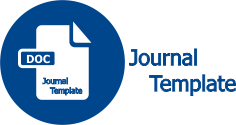Pengembangan Komik Elektronik Kimia pada Materi Pokok Ikatan Kimia untuk Meningkatkan Motivasi dan Hasil Belajar Peserta Didik Kelas X
(1) Universitas Negeri Makassar
(2) Universitas Negeri Makassar
(3) Universitas Negeri Makassar
(*) Corresponding Author
DOI: https://doi.org/10.26858/cer.v5i1.26349
Abstract
Full Text:
PDFReferences
Amir, M. T. (2010). Inovasi Pendidikan Melalui Problem Based Learning. Jakarta: Kencana Prenada Media Group.
Faturrahman. (2015). Model-Model Pembelajaran Inovatif. Yogyakarta: Ar-Ruzz Media.
Handayani, S. (2009). Penerepan Model Pembelajaran Berbasis Masalah (Problem Based Learning) dan Pembelajaran Kooperatif Tipe Jigsaw untuk Meningkatkan Aktivitas Belajar, Hasil Belajar dan Respon Belajar Siswa pada Mata Pelajaran Ekonomi di SMA 2 Malang. Jurnal Pendidikan Ekonomi.
Hasnah. (2016). Pengaruh Strategi Pembelajaran dan Pengetahuab Awal Terhadap Kemampuan Berpikir Kritis Peserta Didik Kelas XI SMA Negeri 1 Polombangkeng Selatan Kabupaten Takalar pada Materi Pokok Larutan Penyangga. Tesis: Tidak diterbitkan.
Mulyanto, H., Gunarhadi, & Indriayu, M. (2018). The Effect of Problem Based Learning Model on Student Mathematics Learning Outcomes Viewed from Critical Thinking Skills. International Online Journal of Education and Teaching, 5(3), 561-562.
Nur, M., & Kardi, S. (2000). Pengajaran Langsung. Pusdat dan Matematika Sekolah Program Pascasarjana: UNESA.
Qomariyah, S. N. (2019). Effect of Problem Based Learning Model to Improve Student Learning Outcomes. International Journal of Educational Research, 4(2), 221.
Redhana, I. W., & Liliasari. (2008). Program Pembelajaran Keterampilan Berpikir Kritis pada Topik Laju Reaksi untuk Siswa SMA. Forum Pendidikan, 27(2).
Russell, J. B. (2001). What is Chemistry. Retrieved 03 27, 2019.
Sardiman. (1996). Interaksi dan Motivasi Belajar Mengajar. Jakarta: PT. Raja Grafindo Persada.
Article Metrics
Abstract view : 196 times | PDF view : 36 timesRefbacks
- There are currently no refbacks.
Jurnal dipublikasikan oleh: Program Studi Pendidikan Kimia
Program Pascasarjana Universitas Negeri Makassar
Alamat JL. Bonto Langkasa Gunung Sari Makassar, 90222
Kampus PPs UNM Makassar Gedung AD ruang 406 Lt 4, Indonesia.Phone 082393643737/085145825311/085242228678
CER UNM Indexed by:

Chemistry Education Review (CER) is licensed under a Creative Commons Attribution-NonCommercial 4.0 International License.










